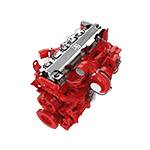Aug . 09, 2024 06:05 Back to list
Guide to Replacing Brake Drums and Shoes for Improved Vehicle Safety and Performance
Replacing Brake Drums and Shoes A Comprehensive Guide
When it comes to vehicle safety and performance, brakes play a pivotal role. Among the various components, brake drums and shoes are essential for vehicles equipped with drum brake systems. Understanding how to replace these parts is crucial for maintaining your vehicle's stopping power and ensuring a safe driving experience. This article will guide you through the process of replacing brake drums and shoes, highlighting the necessary tools, safety precautions, and step-by-step instructions.
Understanding Brake Drums and Shoes
Brake drums are cylindrical components that house the brake shoes. When you press the brake pedal, hydraulic fluid is used to push the brake shoes against the inner surface of the drum, creating friction that slows down or stops the vehicle. As these parts undergo wear and tear over time, it’s vital to replace them periodically to ensure optimal braking performance.
Tools and Materials Needed
Before beginning the replacement process, gather the following tools and materials
1. Jack and jack stands - to lift and secure the vehicle. 2. Lug wrench - for removing the wheel nuts. 3. Brake drum puller - in case the drums are stuck. 4. Safety goggles and gloves - to protect yourself. 5. Brake cleaner - to clean the components. 6. Wrenches and sockets - for various bolts and nuts. 7. New brake drums and shoes - ensure they are compatible with your vehicle.
Safety Precautions
Always prioritize safety when working on your vehicle. Ensure the car is parked on a flat surface, and engage the parking brake. Wear safety goggles and gloves to protect against debris and sharp edges.
Step-by-Step Instructions
replacing brake drums and shoes

1. Prepare the Vehicle Begin by loosening the lug nuts on the wheel where you will be replacing the brake drums and shoes. Once loosened, use a jack to lift the vehicle and secure it with jack stands. Remove the wheel completely.
2. Remove the Brake Drum Inspect the brake drum for any retaining screws or clips, and remove them if present. If the drum is stuck, use a brake drum puller to safely detach it from the wheel hub.
3. Inspect Brake Components Before replacing, inspect the existing brake shoes, hardware, and the inside of the drum for wear and damage. Replace any other components that show signs of significant wear.
4. Install New Brake Shoes Remove the old brake shoes by detaching the springs and any retaining clips. Install the new shoes by reversing the removal process, ensuring that all springs and clips are securely attached.
5. Replace the Brake Drum Once the new shoes are in place, carefully slide the new brake drum onto the hub. Ensure it is seated properly and check for smooth rotation.
6. Reassemble the Wheel Replace the wheel on the hub, hand-tightening the lug nuts first. Lower the vehicle from the jack stands, and then tighten the lug nuts to the manufacturer’s specifications using a torque wrench.
7. Test the Brake System Before driving, pump the brake pedal several times to ensure the brake shoes are properly seated against the drum. Check for any unusual noises or issues.
Conclusion
Replacing brake drums and shoes is a critical maintenance task that can significantly impact your vehicle's safety. While it may seem daunting, with the right tools, materials, and guidance, most vehicle owners can perform this task successfully. Regular inspections and timely replacements will ensure that your brakes function effectively, providing peace of mind while on the road. Always consult your vehicle's manual for specific instructions and specifications, and don’t hesitate to seek professional help if needed.
-
Scania Brake Drums: OEM Quality for Optimal Safety & Durability
NewsAug.16,2025
-
R.V.I: Advanced Remote Visual Inspection for Precision
NewsAug.15,2025
-
Discover HYUNDA: Innovative Vehicles, Equipment & Solutions
NewsAug.14,2025
-
R.V.I: Unlock Advanced Insights & Real-time Performance
NewsAug.13,2025
-
Kamaz Brake Drum: Durable & Reliable for Heavy Duty Trucks
NewsAug.12,2025
-
Heavy Duty Iveco Brake Drum - Premium Quality & Safety
NewsAug.11,2025
